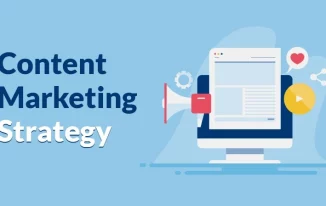If you’re ready to start research on a new system, please use our sample eCommerce RFP template to get started with B2B eCommerce. Beginning a Request for Proposal from scratch may be difficult and time-consuming.
We've compiled a list of the most essential business and technical inquiries to help you with your B2B eCommerce vendor research.
The abbreviation for Request for Proposal is RFP. You may send your evaluation criteria to three to five different suppliers simultaneously and evaluate their responses using an RFP (Request for Proposal).
As a consequence, every platform on the market is on an equal basis. After all, you're asking identical questions to each seller. You'll be able to compare your replies straight to one another without being distracted by a sales pitch.
What is being suggested here is a pretty simple concept:
Suppliers are more likely to promote their products without an RFP, leaving you with no way to evaluate them across the breadth of business-critical needs that apply to your firm.
All about RFPs
The amount of time and effort a vendor devotes to the RFP indicates their dedication to your specifications.
- Keep an eye on the caliber of answers you receive.
- Look for platforms that have a vested interest in your success.
There is a priority column in the RFP itself. Following the question, there is a column for the response. When it comes to that part, make sure you have internal sign-off on what's important and what isn't.
If you use this tool, you have the ability to choose which platform best suits your demands and which platforms to send your RFP to.
Before emailing any questions, double-check that the priorities are correct.
This might be an excellent starting point for your research. Please adapt it to meet the requirements of your organization. Consider the following points around RFPs:
- Your organization may be neglecting migration concerns that are unimportant to the rest of the world.
- Examine each component to ensure that it addresses your most pressing business requirements.
- Please double-check all questions before submitting them to ensure that the priorities are correct.
Use a sample call for a bids template to get you started. It is strongly recommended that a cover letter be included with further information about price expectations and service demands.
This material is typically supplied in a Word document rather than an Excel spreadsheet when creating a proposal.
Before you start your eCommerce RFP project, consider the following questions:
1. How many team members do you have in total, and where are they located?
2. What is the price of your software? Describe the structure and strategy of your licensing program.
3. What kind of clients do you wish to attract? Enterprises are classified into three types: small and medium-sized businesses (SMBs), mid-market companies (MMBs), and large companies (LMBs).
4. Do you have any initiatives in place to help your clients enhance their businesses?
5. Do you have a program where you can cooperate with advertising agencies?
6. Define and define the partner training and certification program (if any).
7. To whom do we have the authority to delegate development and design work?
8. It is possible to install and use web fonts.
9. Is it possible to add other applications or plug-ins?
10. Is it correct that you enable device persistence?
11. If so, do you cache items such as pictures in many locations throughout the world?
12. Do you have any mobile-friendly designs?
13. Provide a list of any third-party programming languages that will be needed to alter the theme. Please make a list of them all.
14. Do you have a ready-to-use mobile checkout?
15. Do you provide upgrades with more features if we purchase a theme from you?
16. How much of the design can be modified locally as opposed to in-browser?
17. Is it possible to handle code changes before they are published in a local development environment?
18. Are the themes up to date with the latest web standards?
19. Is it possible to examine a sample of our product inventory in any theme before making a purchase?
20. Is there any trouble with PCI compliance?
21. Do you adhere to the gold standard for information security management is the ISO/IEC 27001:2013 accreditation?
22. Define federated identity and Single Sign-On capabilities in the program.
23. Describe how to create security roles and the access limitations that may be applied to each one.
24. Describe how personally identifiable information (PII) such as customer names, addresses, preferences, and purchasing habits is securely kept and handled.
25. Describe the auditing method for data access and change.
26. Describe the process for identifying and correcting security issues.
27. Any additional software capabilities for data security, auditing, or financial management should be mentioned.
28. Is it correct that the SSL certificates are part of the package?
29. Who is liable for patching if your platform's merchants aren't?
30. How does your product help customers comply with the GDPR?
List of B2B eCommerce Benefits:
- Information on administrative capabilities
- Catalog management
- Pricing
- Order flow reporting
- Checkout flow
- Marketing
Make sure to learn more about your potential vendors
Create a profile for each vendor before speaking with them to learn more about their history, present fit, and future potential.
Ask about licensing and pricing
You may unearth any installation charges, hidden fees, and other expenses that suppliers would never divulge on their own by asking all the tough questions.
Infrastructure
Create a cheat sheet for your CIO that includes eCommerce project security, integrations, APIs, headless technologies, and the IT infrastructure needed to support the system.
What should you do before putting up an eCommerce RFP?
Before you begin an RFP for an e-commerce website, ask the following questions:
1. What words would you use to describe your company? Define your market position, competitive environment, traffic volume, and sales figures.
2. What do you hope to accomplish using your platform? Is your goal to cut costs, update your technological stack, or promote yourself as an industry thought leader?
3. What services do you provide, and who are your customers? What are your most effective sales channels? Do you intend to grow worldwide or domestically?
4. Are there any specific product configuration needs, pricing demands, purchasing criteria, or delivery requirements that you are aware of?
5. Do you have a customer service plan in place? Describe your requirements for marketing, promotion, navigation, and user experience.
6. Do you have a list of all the relationships you wish to keep?
Steps in an eCommerce Request for Proposal
The eCommerce RFP process is just as crucial as the RFP paper itself to be successful. A typical RFP-driven sourcing strategy consists of four steps:
The first step in the planning process is to:
Examine the eCommerce industry and other firms in the field, and assess the current service you're providing. Consult your coworkers and customers.
You may decide why an eCommerce solution is required and why now by identifying all of your eCommerce stakeholders, describing their objectives, and concluding why an eCommerce solution is required.
Put a premium on your strengths. Plan how you'll include stakeholders in the review process, as well as the criteria you'll employ.
Creating the RFP:
This is where you will construct the majority of your eCommerce RFP—answer open-ended and comprehensive questions with stakeholders, such as the success criteria for the project. Make a list of your RFP's categories, questions, and deadlines.
This is the point when everything is put to the test:
Encourage participants to compare and analyze their replies. Line up questions and responses next to one another while evaluating providers. By doing so, you divert your focus away from a single merchant and onto the answer.
The following procedures are involved in selecting the most deserving applicants:
The group is narrowed down to the top candidates. For further information, contact any references you find among the businesses. Look into prospective implementation partners and start conversations with them.





